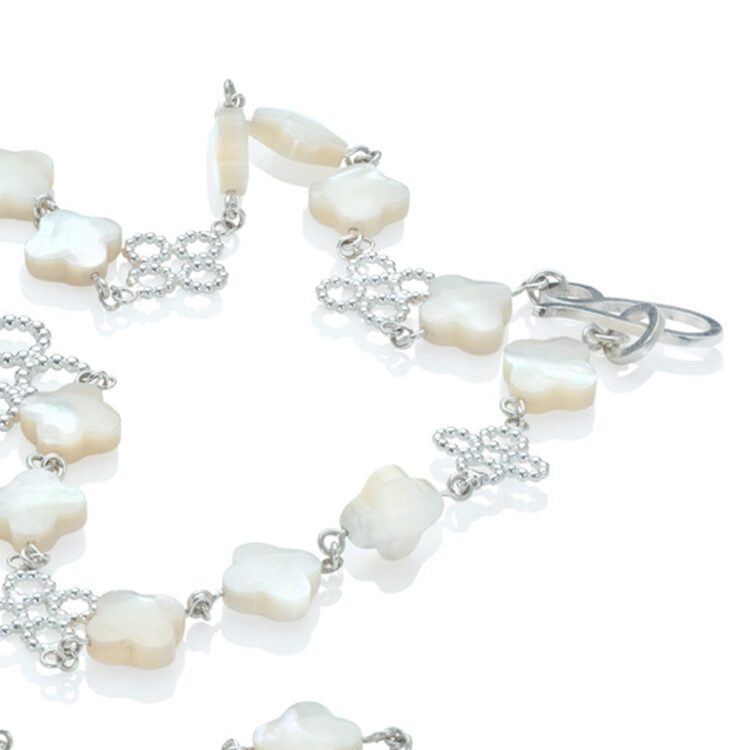Jewellery & water, have you ever wondered about it?
As I was caught under some pretty heavy downpours of rain recently, it suddenly hit me! I was holding my little foldable umbrella, trying to prevent the rain from drenching both me and my jewellery. ‘What am I doing?’ I thought. Why was I instinctively protecting my rings, bracelets and wrist watch from the rain?
Interesting when you come to think about it. The obvious answer is because I didn’t want any of my cherished possessions to get damaged. But then, how much damage could water actually do to jewellery?
Jewellery & water have long been friends, but
As a very general rule of thumb, clean cold water won’t harm precious jewellery but moisture is not recommended. How do you navigate that fine line?
Let’s start with that universally accepted fact that we cannot live without water. Now let’s think about it a little deeper and in a more holistic way. Bear with me, I trust that at the end of it you will look at the jewellery and water relationship in a different light.
Effectively it is safe to say that without water your gorgeous jewellery would not even exist. Each step has required water. These include from mining, cleaning and cutting the gemstones and metals to the desired shapes, to making the actual piece.

The sea, with its mythical power and symbolism, has also long been a source of inspiration for jewellery designers. Throughout history it has been interpreted, imagined and reinvented countless times but its appeal and fascination have never failed.
The Silver Wave Ring by Essemgé is one-off that offers a modern take on the theme. You can discover it here.
Not only that but think of amber, coral or pearls eg. These highly praised gems would not even be without water. Take a number of well-known minerals. Their names come from the word ‘water’ and its characteristics: its purity, its crystal-like quality, its transparency, its sky-reflecting colour, its solid / liquid states. Aquamarine or rock crystal eg are perfect examples of that. Both names refer to the water element.
Jewellery & water being close allies offers a lot of advantages. Most notably it means that you can actually safely clean your precious jewellery yourself at home. Simply follow the usual clean-at-home instructions that I have detailed in the Jewellery Care page. Soak in soapy lukewarm water for a few minutes so that the remaining dirt falls off. If there is any residue, use a very soft toothbrush. Rinse under clear water, pat dry and leave to dry completely before storing away until next time you wear them.
However there is a number of critical caveats to that friendship.
They can also be enemies!
If only it could be as easy as to never have to worry about your jewellery getting wet. Alas, like many things, it is not as straightforward. Don’t fret though, with a little common sense you will find it is actually very manageable.
- Only clear, cold to lukewarm water is safe for most of your precious jewellery. It means that any other type such as sea water, pool water or any water with added corrosive or abrasive chemicals, as well as hot water, may affect it.
- I am talking about precious jewellery only. That excludes fashion jewellery, vintage or antique pieces, and most wristwatches. The manufacturing of those pieces may have included using water-soluble glues, water-based colours, biodegradable materials or making processes like shaping or texturing. Water or even just dampness or moisture will affect them irreversibly.
That said, not all precious jewellery is safe with water:
- If your jewellery has some sort of mechanism that uses a non-precious metal such as steel, like spring coils in clasps on chains, cuff links, or even brooches, any water or dampness will risk rusting the metal and clogging the mechanism.
- a number of gemstones are water-soluble to some degree. As incredible as it may sound there are minerals that are so soft, or that have internal flaws and cracks, that they can dissolve or be damaged with water. To be on the safe side, the easiest is to remember that most gemstones do not like water, with the noticeable exception of opals.
Most gemstones do not like water and are best kept dry.
Close up of a bespoke commission sautoir necklace that I made using sustainable gorgeous quality natural mother of pearl and sterling silver. If you would like to discuss a project, please contact me, Sophie, and send me an email at contact@essemge.com.

So what do you do if your jewellery gets wet inadvertently ?
Although clean water many not affect your precious possessions quite as radically as some other treatments, it can still leave some more or less permanent water marks on the metal surfaces whilst drying. Amongst other things these marks are caused by the dry mineral residues contained in the water such as limescale and that are left on the jewellery once the water has evaporated.
Such stains can actually be quite tricky to get rid of. You may need to take your jewellery to a jeweller to get it professionally cleaned and possibly repolished.
To avoid such hassle, always pat dry your jewellery with a clean soft cloth and leave to dry completely before storing. Do not leave it to air dry from wet.
If you are outside, at work etc and your jewellery gets wet, there are a couple of things that you can easily do. First as soon as you feel that your bracelets or rings getting humid, gently tap them front and back with a clean tissue to absorb maximum moisture. Then, once towel dried, use your sleeves and gloves to shield your jewellery from the severe weather. It is also a good idea to do so as a preventive measure too!

By taking these simple actions you will save yourself a lot of potential future disappointments and will keep your jewellery beautiful for longer.
Here, a marvelously delicate and romantic pair of Graphic Rose dangle earrings in silver and rock crystal. Available here.
A more radical approach could be to keep your gem-adorned jewellery for dry weather and wear only plain sliver or gold otherwise, but then where would be the (some of the) spice of life?
If you have any questions, please do contact me, Sophie. You can reach me via email at contact@essemge.com.








